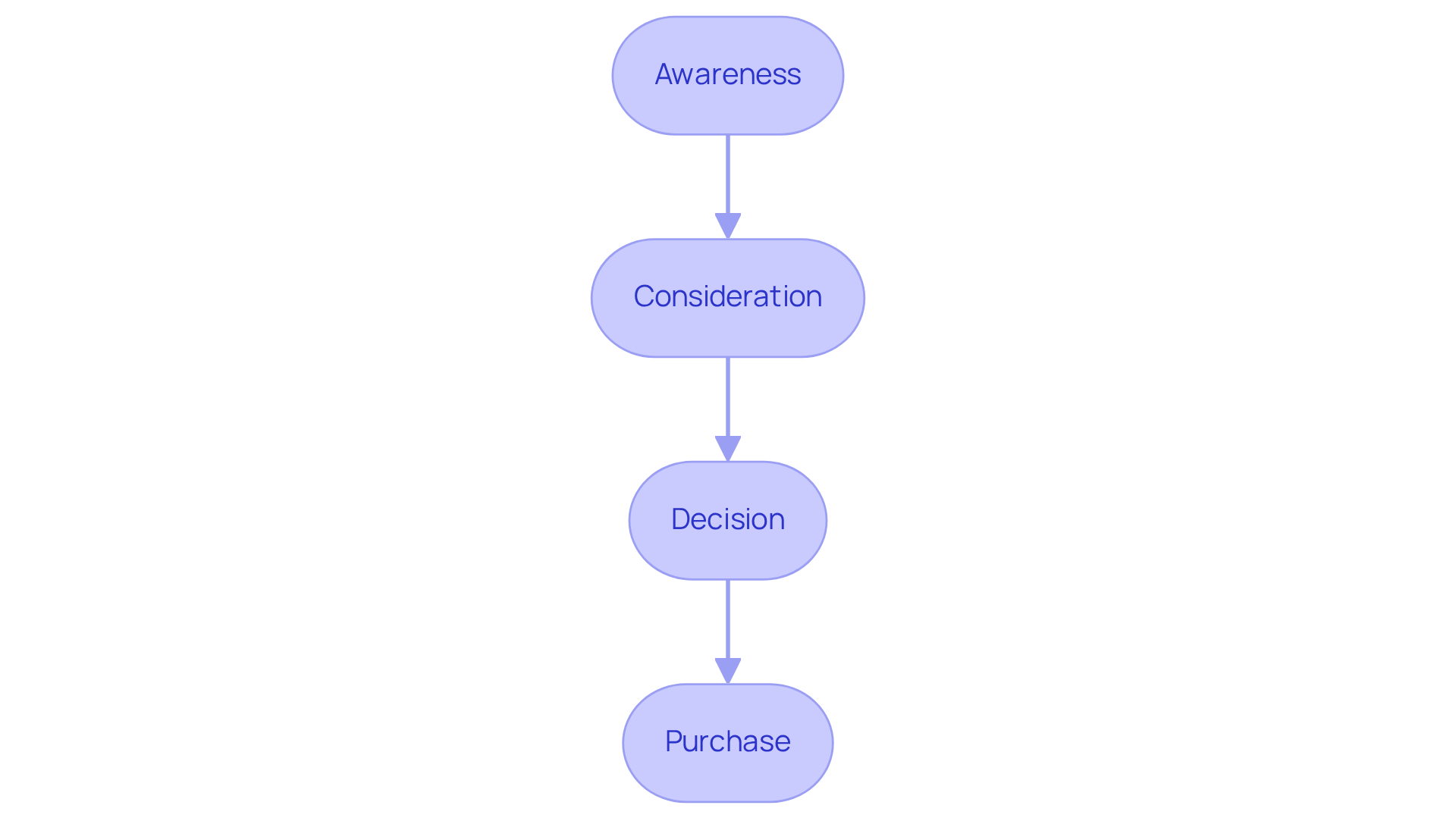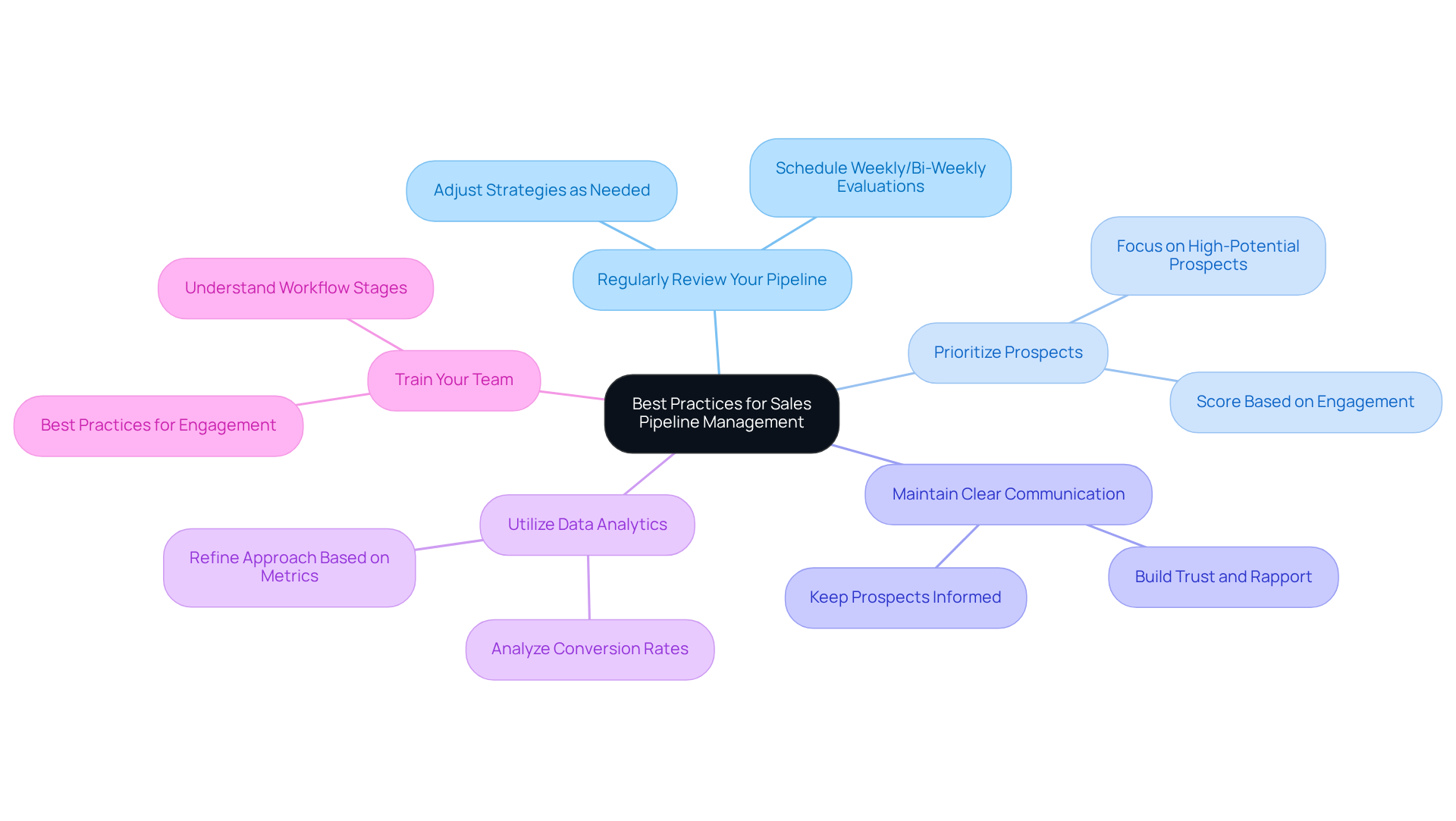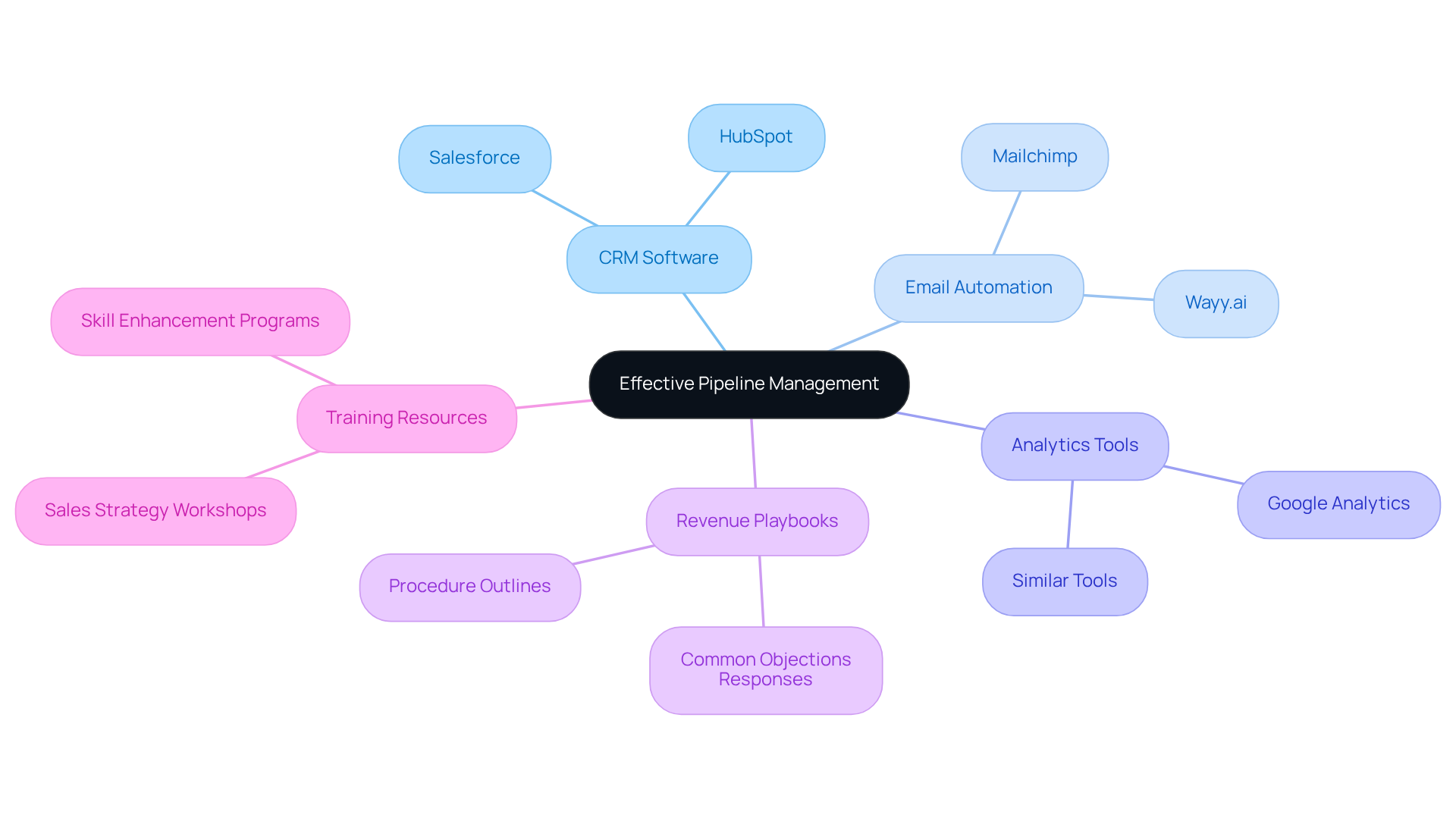Overview
Managing a sales pipeline effectively is essential for the success of small businesses, and we understand the challenges you face in this journey. It’s important to define your sales stages clearly, as this helps you navigate the process with confidence. Utilizing data analytics can provide valuable insights, allowing you to make informed decisions that resonate with your goals.
Moreover, employing tools like CRM software and email automation can significantly enhance your outreach efforts. These resources are designed to support you in driving higher conversion rates and, ultimately, fostering revenue growth. Remember, you’re not alone in this; together we can achieve success by leveraging these strategies to build a thriving business.
As you consider these steps, think about how they can alleviate some of the pressures you may feel. By taking action now, you can create a more structured and effective sales process that not only meets your needs but also empowers your business to flourish.
Introduction
Understanding the intricacies of a sales pipeline can truly be the difference between stagnation and growth for small businesses. By defining and managing this crucial framework, we can help you not only track prospects but also forecast revenue and identify potential hurdles in your sales process.
But what happens when the pipeline becomes cluttered or mismanaged? In this article, we will explore essential steps and best practices for effectively managing a sales pipeline. Together, we can uncover insights that lead to improved conversion rates and sustainable business success.
Define Your Sales Pipeline and Its Importance
A customer journey map serves as a visual framework that outlines the phases prospective clients navigate before making a purchase. For small business owners, this tool is invaluable. It not only helps to manage the sales pipeline by tracking prospects and forecasting revenue but also assists in identifying obstacles within the sales process.
By clearly defining your revenue process, you gain valuable insights into where potential clients are in their journey. This understanding allows you to tailor your outreach efforts more effectively. Imagine the difference it could make to connect with potential customers at just the right moment—this can lead to higher conversion rates. Research indicates that companies with well-defined sales processes can experience growth of up to 28% compared to those without.
With Wayy.ai, you have access to features like and targeted outreach, along with daily email updates. These updates provide key metrics on how many prospects were reached, who showed interest, and how your conversion rate is improving. It's encouraging to know that organizations that adopt structured, data-informed methods to manage sales pipeline often close more deals and spend less time on unproductive leads.
In essence, a thoughtfully executed sales process, supported by tools like Wayy.ai, is crucial to manage sales pipeline, maximize your revenue potential, and foster sustainable growth. Together, we can navigate these challenges and achieve success.

Identify the Stages of Your Sales Pipeline
Recognizing the phases of your sales pipeline is crucial to manage sales pipeline efficiently and promote growth. Have you thought about how understanding these stages can transform your approach? Common stages include:
- Lead Generation: Attract potential customers through targeted marketing efforts.
- Initial Contact: Reach out to prospects to introduce your product or service, establishing a meaningful connection.
- Qualification: Evaluate if the prospect aligns with your offering, determining their potential as a customer.
- Proposal: Present customized solutions to eligible prospects, emphasizing how your product addresses their unique needs.
- Negotiation: Engage in discussions about terms, addressing any objections to facilitate agreement.
- Closing: Finalize the transaction, converting the lead into a customer.
It's essential to customize these phases to effectively manage sales pipeline in alignment with your distinctive business model, ensuring they resonate with your particular sales process and customer interactions. This thoughtful customization not only enhances clarity but also at each stage, ultimately driving your business success.
Additionally, Wayy.ai provides daily email updates with key metrics, allowing you to track how many leads were reached, who showed interest, and how your conversion rate is improving. This data-focused method can significantly enhance your revenue performance, reminding you that together, we can achieve success.

Implement Best Practices for Sales Pipeline Management
Managing your sales pipeline can feel overwhelming, but with a few best practices, you can confidently manage sales pipeline.
- Regularly Review Your Pipeline: Consider scheduling weekly or bi-weekly evaluations to check in on your prospects' statuses. This allows you to adjust your strategies as needed, ensuring you stay on track.
- Prioritize Prospects: Focus on those high-potential prospects. Scoring them based on their engagement and suitability can help you direct your efforts where they matter most.
- Maintain Clear Communication: Keeping your prospects informed throughout the selling process is crucial. It helps build trust and rapport, making them feel valued and understood.
- Utilize Data Analytics: By analyzing metrics such as conversion rates and lead sources, you can refine your approach and make informed decisions.
- Train Your Team: Ensure that everyone involved in the selling process understands the workflow stages and best practices for engagement. Together, we can achieve success by effectively managing your sales pipeline.

Utilize Tools and Resources for Effective Pipeline Management
To effectively manage the sales pipeline, we understand that utilizing the right tools and resources can make a significant difference. Consider these options that can support your journey:
- CRM software, like HubSpot or Salesforce, can assist you in monitoring prospects, managing customer interactions, analyzing sales data, and effectively managing the sales pipeline, ensuring you stay connected with your clients.
- Email Automation: Platforms such as Mailchimp or Wayy.ai can , ensuring you never miss a timely follow-up with potential clients.
- Analytics Tools: Google Analytics or similar tools provide valuable insights into lead behavior and conversion metrics, helping you understand what resonates with your audience.
- Revenue Playbooks: Developing a playbook that outlines your procedures, optimal methods, and responses to common objections can empower your team to navigate challenges with confidence.
I need to manage the sales pipeline effectively to achieve our targets.
Training Resources: Investing in training programs or workshops focused on sales strategies can help your team manage the sales pipeline effectively, enhancing their skills and fostering growth and success together.
Remember, these tools are here to support you in achieving your goals and overcoming any obstacles you may face.

Conclusion
A well-managed sales pipeline is crucial for the success of small businesses, offering clarity and direction throughout the customer journey. By understanding and defining each stage of the sales process, you can effectively engage potential clients, tailor your outreach efforts, and ultimately drive higher conversion rates. This structured approach not only helps in tracking prospects but also empowers you to forecast revenue and identify any obstacles that may hinder your growth.
Throughout this article, we have discussed key strategies for managing your sales pipeline:
- Regular reviews
- Prioritizing high-potential prospects
- Maintaining clear communication
- Utilizing data analytics
Additionally, leveraging tools and resources, such as CRM software and email automation, can significantly enhance the efficiency of your sales pipeline management. These practices are essential for ensuring that your business remains agile and responsive to the needs of your prospects.
In conclusion, the significance of a well-defined sales pipeline cannot be overstated. By implementing effective management strategies and utilizing the right tools, you can navigate the complexities of the sales process with confidence. Embracing these practices not only fosters growth but also establishes a foundation for long-term success. We encourage you to take action today by assessing your current sales pipeline and making necessary adjustments to optimize your approach, ensuring that you capitalize on every opportunity for growth.
Frequently Asked Questions
What is a customer journey map?
A customer journey map is a visual framework that outlines the phases prospective clients navigate before making a purchase.
Why is defining a sales pipeline important for small business owners?
Defining a sales pipeline helps manage the sales process by tracking prospects, forecasting revenue, and identifying obstacles within the sales process.
How does understanding the sales pipeline benefit outreach efforts?
Understanding the sales pipeline allows businesses to tailor their outreach efforts more effectively and connect with potential customers at the right moment, leading to higher conversion rates.
What impact can a well-defined sales process have on a company's growth?
Companies with well-defined sales processes can experience growth of up to 28% compared to those without such processes.
What features does Wayy.ai offer to assist with sales pipeline management?
Wayy.ai offers features like one-click sales strategies, targeted outreach, and daily email updates that provide key metrics on prospects reached, interest shown, and conversion rate improvements.
How do structured, data-informed methods affect deal closure and lead management?
Organizations that adopt structured, data-informed methods to manage their sales pipeline often close more deals and spend less time on unproductive leads.
What is the overall significance of a well-executed sales process?
A well-executed sales process, supported by tools like Wayy.ai, is crucial for managing the sales pipeline, maximizing revenue potential, and fostering sustainable growth.




